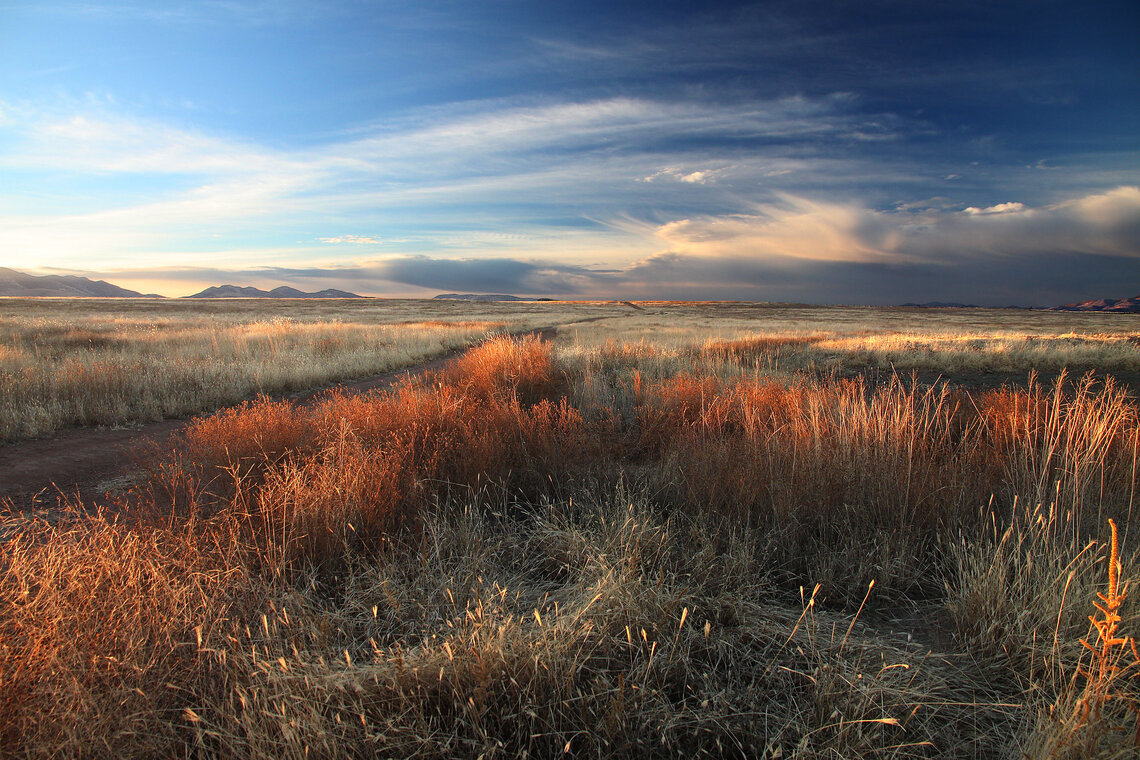By Sonoran Joint Venture staff
Grasslands across North America and within the Sonoran Joint Venture (SJV) region are declining at alarming rates. Such loss has direct impacts to birds. In their recent article, Decline of the North American avifauna, researchers calculated that nearly 3 billion adult breeding birds have been lost since 1970. Of all the different bird groups, grassland species have been the hardest hit. “Across breeding biomes, grassland birds showed the largest magnitude of total population loss since 1970—more than 700 million breeding individuals across 31 species—and the largest proportional loss (53%); 74% of grassland species are declining.”
The single greatest driver of grassland habitat loss is conversion to agriculture and development. Other threats include woody shrub encroachment, unsustainable grazing, erosion, invasive species, fragmentation, and increased frequency and severity of fire. In the SJV, grasslands fall into three main types: Sonoran Desert grassland, Chihuahuan Desert grassland, and riparian grassland. Not only are these diverse areas of the SJV region important breeding and wintering areas for our continent’s grassland birds, but many birds that breed in the Great Plains winter in the adjacent desert habitats. Protecting and restoring grassland habitats is imperative to address the crisis of bird loss throughout the central grasslands.
The Natural Resources Conservation Service (NRCS) develops technical information and provides guidance for landowners to implement habitat restoration and management practices on their lands. These programs help improve habitat for migratory birds and other wildlife while maintaining the value of working lands. However, evaluation of different programs and tactics is needed to improve effectiveness. How do we know which practices will have the greatest benefit to birds in different situations?
The JV8 Central Grasslands Conservation Initiative is working collaboratively across 8 different Migratory Bird Joint Ventures to develop strategies for grasslands conservation (see our article to learn more about the JV8). In late 2020, JV8 partners received an NRCS Conservation Innovation Grant to develop a tool to evaluate the effects of different grassland management actions on bird populations. Funds from the grant will help create a user-friendly, web-based tool that land managers can use to help decide which practices make the most sense for them.
Woody shrub encroachment of grasslands often results from unsustainable grazing practices. In the SJV region, it is largely in the form of mesquite invasion. This changes grassland structure, which can make it unsuitable for grassland birds, some of which have specific needs for grass height and cover. In addition to adjusting grazing practices, land managers working to improve grassland health can undertake a number of different actions. But how will these practices impact birds? How can managers incorporate potential impacts to birds into the process when deciding what activities to recommend and implement?
The new Tree-age Decision Support Tool being created by the Oaks and Prairies, Playa Lakes, Rio Grande, and Sonoran Joint Ventures will help land managers and conservation planners model the impacts of shrub removal on bird populations. Using existing bird monitoring and vegetation data, the tool will allow users to enter information on a specific shrub cover attribute and proposed management action, and it will provide an estimate of the projected change in various grassland bird populations as a result of that management action. For example, if a land manager is considering removal of 50% of encroaching mesquite from an area, the tool will provide an estimate of the projected change in various grassland bird populations because of that management action. This will help land managers understand the impacts of their management activities on bird populations and can help guide their decisions. Importantly, this tool will also include effects on birds in the winter, an important and often overlooked aspect of the annual cycle. Our hope is that Tree-age will help our partners make informed decisions when planning management activities throughout the grasslands in the SJV region and beyond. While our current funding is only to develop the tool for the United States, we are looking for additional support to extend the model to northern Mexico to include all the central grasslands, and to make the tool available bilingually.
To learn more, contact Adam Hannuksela, SJV Science Coordinator.

